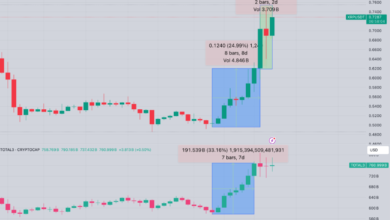
Understanding the Basics of an Indexed Universal Life Policy
Introduction
When it comes to securing your financial future and providing peace of mind for your family, life insurance plays a crucial role. Among the many options available today, an indexed universal life policy stands out for its flexibility and potential for growth. This type of policy combines the benefits of traditional life insurance with the opportunity to earn interest based on the performance of a selected market index. It offers both protection and savings under a single plan, making it increasingly popular among long-term planners and investors.
What is an Indexed Universal Life Policy?
An indexed universal life policy is a form of permanent life insurance that offers a death benefit to beneficiaries along with a cash value component. What makes it unique is that the cash value growth is tied to a specific stock market index, such as the S&P 500. However, it does not directly invest in the stock market. Instead, it uses a formula to calculate interest credits based on the performance of the index. This means policyholders can potentially benefit from market gains without risking their entire principal.
How It Works
An indexed universal life policy is structured in a way that part of your premium goes toward the insurance cost and administrative fees, while the life insurance remaining portion is allocated to your cash value account. The cash value earns interest based on the performance of the chosen index, with limits such as a cap rate and a floor rate.
- Cap Rate: The maximum percentage your policy can earn in a good market year.
- Floor Rate: The minimum interest rate, often 0% or 1%, ensuring that your cash value won’t decrease in a market downturn.
This design allows policyholders to enjoy potential market-linked returns while having downside protection against losses.
Flexibility and Customization
One of the major advantages of an indexed universal life policy is its flexibility. Unlike term life insurance, which offers coverage for a fixed period, this type of policy can last your entire life if maintained properly. Moreover, it allows you to adjust your premium payments and death benefits within certain limits.
If your cash value grows sufficiently, you may even be able to reduce or skip premium payments. Likewise, you can increase the death benefit if your financial obligations change or reduce it if necessary.
Tax Advantages
Indexed universal life policies offer several tax benefits that appeal to individuals looking to protect and grow their wealth:
- The death benefit is generally income-tax-free to beneficiaries.
- Cash value grows tax-deferred, meaning you won’t pay taxes on the interest or growth while it remains in the policy.
- Loans or withdrawals taken from the policy’s cash value are typically tax-free, provided the policy remains in force and is not classified as a modified endowment contract (MEC).
These tax benefits can make an indexed universal life policy a powerful tool for estate planning, retirement income, or wealth transfer.
See also: 5 Top Tips to Help You Manage Your Small Business
Investment-Like Growth with Lower Risk
While not a direct investment vehicle, an indexed universal life policy provides the opportunity to grow wealth over time without exposing the policyholder to the same level of risk as traditional investments. Because of the floor rate, your cash value will not decline even if the underlying index performs poorly.
This makes it an attractive option for conservative savers who still want exposure to potential market growth but with limited risk.
Policy Loans and Withdrawals
One important feature of an indexed universal life policy is the ability to borrow against the policy’s cash value. Policy loans are often tax-free and do not require credit checks, but interest will be charged, and any unpaid loan amount will reduce the death benefit.
Withdrawals are also allowed, but they may reduce both the cash value and the death benefit. It is essential to manage loans and withdrawals carefully to avoid unintended tax consequences or policy lapses.
Is It Right for You?
Not every individual or family will benefit equally from an indexed universal life policy. It may be a strong fit for those who:
- Want lifelong life insurance coverage
- Are interested in accumulating cash value for future use
- Prefer flexible premiums and adjustable benefits
- Seek tax-advantaged growth and estate planning tools
- Are risk-averse but still want some market participation
However, it may not be ideal for someone looking for simple, low-cost term coverage or those who have difficulty maintaining consistent premium payments. Understanding your own financial goals, timeline, and risk tolerance is essential before choosing this type of plan.
Key Considerations Before Buying
Before committing to an indexed universal life policy, here are a few important points to evaluate:
- Fees and Charges: Administrative fees, cost of insurance, and surrender charges can affect your returns.
- Complexity: These policies can be difficult to understand. A clear explanation from a qualified insurance agent or advisor is essential.
- Performance Limits: With cap rates in place, your cash value may not benefit fully from bull markets.
- Policy Lapse Risk: If the cash value is not sufficient to cover policy costs and you don’t maintain premiums, the policy can lapse.
Working with a Financial Advisor
Since indexed universal life policies are complex and vary significantly among insurance providers, it’s crucial to consult with a trusted financial advisor or insurance specialist. They can help you understand all the moving parts, compare different providers, and choose a plan that aligns with your financial strategy.
They can also help you periodically review the policy to make adjustments and ensure the performance aligns with your long-term objectives.
Conclusion
An indexed universal life policy offers a powerful combination of lifelong protection and the potential for tax-advantaged growth. It appeals to individuals who value flexibility, market participation with downside protection, and the ability to customize their insurance based on changing life needs.
Before purchasing, it’s important to understand how the policy works, the costs involved, and how it fits within your overall financial plan. With proper guidance and maintenance, it can serve as a valuable asset for wealth building, retirement planning, and legacy preservation.




